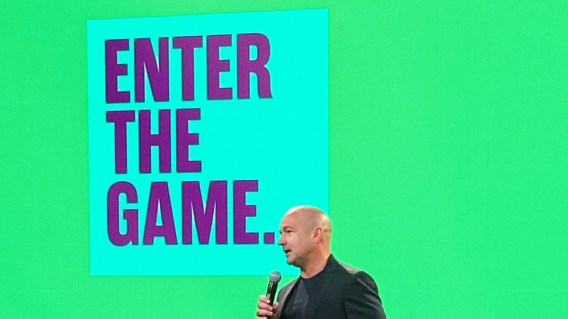Foxtel leans into sports and new advertising models at energetic upfront

Foxtel Media CEO Mark Frain gets serious about sport (Mumbrella)
If you weren’t aware yet that Foxtel had recently been bought by a sports broadcasting monolith, then the locker-room vibe of its 2026 upfront presentation will have been mighty confusing.
The event was titled Enter The Game, the ‘game day look’ was ‘courtside casual’ (sneakers, blazer over a t-shirt) and the venue — a disused power station in the inner west of Sydney — was decked out like the bastard child of a 1990s gaming arcade and a nightclub, with cricket nets, car-racing games, people kitted out in soccer uniforms, and tickets to the Ashes up for grabs.
It didn’t smell of Deep Heat, but there was a half-time break where oranges were handed out from eskies. And Adam Gilchrist was milling about, talking about tequila shots — but we’ll get to him.


HBO Max called for Foxtel and left a message: outside of Kayo, ya done.